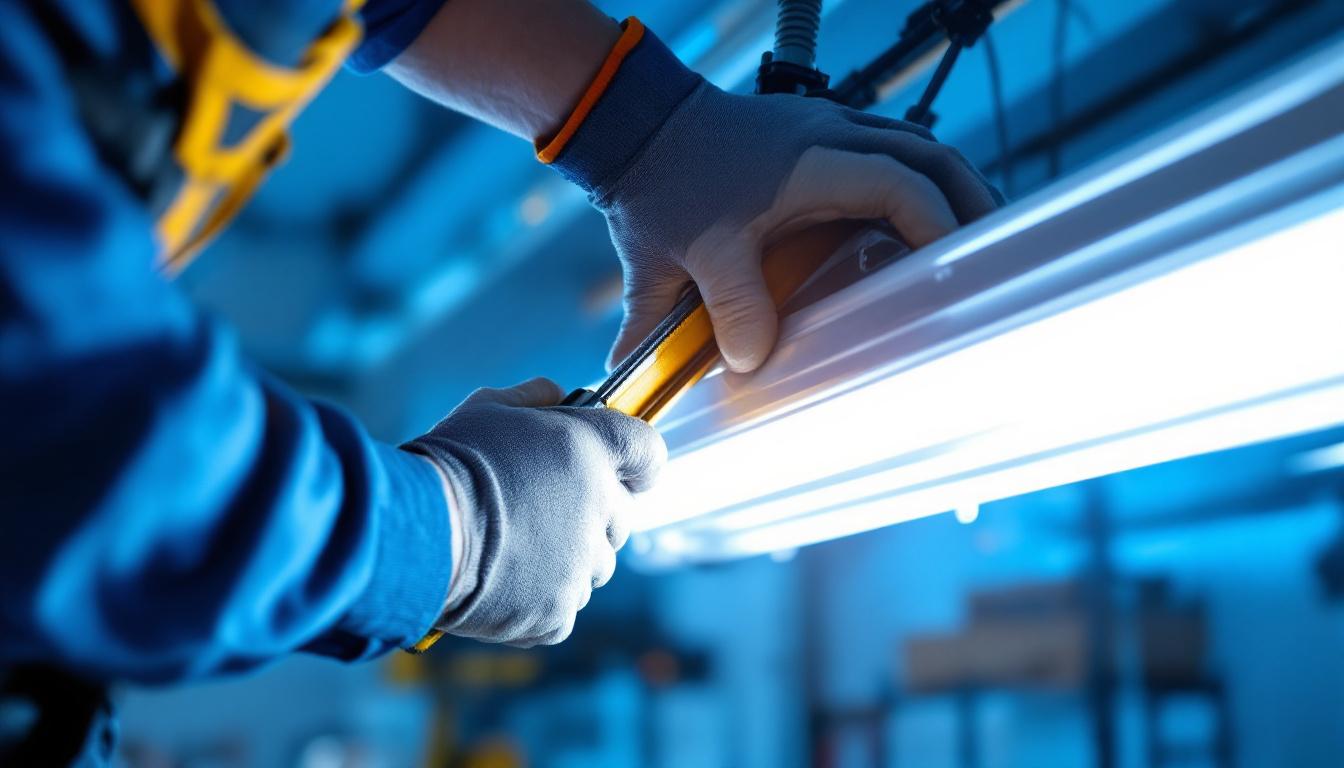
Wire housing plays a crucial role in the efficiency and functionality of lighting systems. It serves as the protective casing for electrical wires, ensuring safety and reliability in various environments. For lighting contractors, understanding the intricacies of wire housing is essential to optimize performance and meet client expectations.
Typically made from materials such as plastic or metal, wire housing not only protects wires from physical damage but also minimizes electromagnetic interference. This interference can disrupt the performance of lighting fixtures, making it imperative to choose the right wire housing for specific applications. Additionally, effective wire housing can contribute to the longevity of the lighting system by preventing wear and tear caused by environmental factors such as moisture, dust, and temperature fluctuations.
There are several types of wire housing available, each designed for different applications. Common types include conduit, junction boxes, and raceways. Conduit systems are often used in commercial settings, providing a robust solution for protecting wiring in exposed areas. Junction boxes, on the other hand, are ideal for housing connections and ensuring that wiring is safely contained. These boxes not only facilitate easy access for maintenance but also help in organizing complex wiring systems, which can be particularly beneficial in large installations.
Raceways offer a versatile option, allowing for the organization and protection of multiple wires within a single channel. They can be mounted on walls or ceilings, providing a neat appearance while maintaining accessibility. Understanding the distinct advantages of each type can help contractors make informed decisions that enhance the overall efficiency of lighting installations. Furthermore, the choice of wire housing can also influence the aesthetic appeal of a space, as well-organized wiring solutions contribute to a cleaner and more professional look.
The material used for wire housing significantly impacts its performance. Plastic housings are lightweight and resistant to corrosion, making them suitable for indoor applications. Conversely, metal housings offer greater durability and protection against environmental factors, making them ideal for outdoor or industrial settings. The choice between these materials often depends on the specific requirements of the lighting project, including the expected exposure to elements and the overall design intent.
When selecting materials, it is also essential to consider factors such as temperature resistance, flexibility, and compliance with local building codes. Choosing the right material can prevent issues down the line, ensuring that lighting systems operate efficiently and safely. Additionally, advancements in technology have led to the development of hybrid materials that combine the benefits of both plastic and metal, providing enhanced performance characteristics. For instance, some modern wire housings incorporate features like UV resistance and fire retardancy, further improving safety and longevity in various applications.
Effective design plays a pivotal role in optimizing wire housing for lighting systems. A well-thought-out design not only enhances aesthetics but also improves functionality and maintenance. Lighting contractors must consider various design elements to ensure that wire housing meets both operational and visual requirements.
Space is often a limiting factor in lighting installations. Optimizing wire housing design to fit within confined areas can maximize the efficiency of the entire system. This might involve using compact junction boxes or slim raceways that can be easily integrated into existing structures without compromising performance.
Moreover, considering the layout of the lighting fixtures and the associated wiring can lead to more efficient installations. Proper planning can reduce the amount of wire needed and minimize the potential for signal degradation, ultimately enhancing the system’s overall efficiency. Additionally, utilizing modular designs can allow for flexibility in future upgrades or changes, ensuring that the wire housing can adapt to evolving lighting technologies without requiring a complete overhaul.
Accessibility is another critical factor in wire housing design. Lighting systems require regular maintenance to ensure optimal performance. Designing wire housing with accessibility in mind allows for easier inspections and repairs, reducing downtime and maintenance costs.
Incorporating features such as removable covers or strategically placed access points can facilitate maintenance efforts. By prioritizing accessibility, contractors can enhance the longevity of lighting systems and provide better service to their clients. Furthermore, considering the use of color-coded wiring and labeling can significantly streamline maintenance processes, allowing technicians to quickly identify and address issues without extensive troubleshooting. This attention to detail not only improves operational efficiency but also contributes to a safer working environment, minimizing the risks associated with electrical maintenance.
Choosing the right materials for wire housing is crucial for durability and performance. The materials used must withstand environmental factors, such as moisture, temperature fluctuations, and potential physical impacts. For instance, using corrosion-resistant materials in outdoor installations can prolong the lifespan of the wire housing and reduce the need for frequent replacements.
Additionally, the thermal properties of the materials should be considered to prevent overheating, which can lead to system failures. Insulating materials can help maintain optimal temperatures, while also contributing to energy efficiency. By selecting high-quality materials that meet industry standards, contractors can ensure that their wire housing not only performs well but also aligns with sustainability goals, reducing the overall environmental impact of lighting systems.
Installation techniques significantly influence the efficiency of wire housing in lighting systems. Proper installation ensures that the wire housing functions as intended and minimizes potential issues that could arise during operation. Lighting contractors should adhere to best practices to guarantee optimal performance.
Adhering to proper wiring practices is essential for maximizing the efficiency of wire housing. This includes ensuring that wires are correctly sized for the load they will carry and that they are securely fastened within the housing. Loose wires can lead to increased resistance and heat buildup, which can compromise the performance of the lighting system.
Additionally, utilizing the correct connectors and terminals can prevent issues related to poor connections. Ensuring that all connections are tight and secure will minimize the risk of electrical failures and enhance the overall reliability of the lighting system.
Compliance with local electrical codes and standards is non-negotiable for lighting contractors. These regulations are designed to ensure safety and efficiency in electrical installations, including wire housing. Familiarity with these codes can prevent costly mistakes and ensure that installations pass inspections.
Contractors should stay updated on any changes to local regulations and ensure that all materials and installation practices align with these standards. This proactive approach not only enhances safety but also contributes to the overall efficiency of lighting systems.
As technology advances, innovative solutions for wire housing continue to emerge. These advancements can significantly enhance the efficiency and functionality of lighting systems. Lighting contractors should remain informed about the latest trends and technologies to stay competitive in the industry.
Smart wire housing solutions integrate technology to improve the efficiency of lighting systems. These solutions may include built-in sensors that monitor energy consumption or detect faults in the wiring. By providing real-time data, smart wire housing can help contractors identify issues before they escalate, ensuring that lighting systems operate at peak efficiency.
Moreover, smart solutions can facilitate remote monitoring and control, allowing for adjustments to be made without the need for physical access to the wire housing. This capability can enhance the overall user experience and provide added value to clients.
With a growing emphasis on sustainability, the use of eco-friendly materials in wire housing is becoming increasingly popular. These materials not only reduce environmental impact but can also enhance the efficiency of lighting systems. For example, recycled plastics and biodegradable materials can offer similar protective qualities to traditional options while minimizing waste.
Contractors who prioritize eco-friendly materials can appeal to environmentally conscious clients and contribute to a more sustainable future. This commitment to sustainability can also enhance a contractor’s reputation in the industry, leading to increased business opportunities.
To ensure that wire housing performs at maximum efficiency, rigorous testing and quality assurance processes are essential. This step is crucial for identifying potential issues before installation and ensuring that all components meet industry standards.
Performance tests should be conducted on wire housing to assess its durability, resistance to environmental factors, and overall functionality. These tests can help identify any weaknesses in the design or materials used, allowing for improvements to be made before the product reaches the market.
Additionally, contractors should consider conducting field tests on installed wire housing to evaluate its performance in real-world conditions. This feedback can be invaluable for refining installation techniques and ensuring that future projects meet the highest standards of efficiency.
Implementing quality control measures throughout the installation process can prevent issues related to wire housing. Regular inspections and adherence to best practices can help identify potential problems early, ensuring that installations are completed to the highest standards.
Contractors should also consider training their teams on the importance of quality control and the specific measures that should be taken during installation. A well-trained team can significantly enhance the efficiency and reliability of lighting systems, leading to satisfied clients and repeat business.
Optimizing wire housing for maximum efficiency in lighting systems is a multifaceted endeavor that requires careful consideration of materials, design, installation techniques, and ongoing maintenance. Lighting contractors who prioritize these elements can enhance the performance of their installations and provide exceptional service to their clients.
By staying informed about the latest trends and technologies, as well as adhering to best practices and local regulations, contractors can ensure that their lighting systems operate efficiently and reliably. The path to maximum efficiency is paved with knowledge, innovation, and a commitment to quality, ultimately leading to successful lighting projects that meet and exceed client expectations.
Ready to elevate your lighting projects with wire housing solutions that embody efficiency and quality? Look no further than LumenWholesale. Our extensive range of spec-grade lighting products is designed to meet the highest industry standards, ensuring your installations perform optimally. With unbeatable wholesale prices and the convenience of free shipping on bulk orders, you can trust us to provide the best value without any hidden fees. Make your next project a shining example of excellence. Visit LumenWholesale today for wholesale lighting that blends quality, affordability, and convenience seamlessly.

Discover how recessed lighting motion sensors are revolutionizing the lighting industry, offering contractors innovative solutions for efficiency, energy savings, and enhanced design flexibility.

Discover the ultimate guide to light bulb styles tailored for lighting contractors.

Discover how outdoor motion sensors are revolutionizing modern lighting solutions by enhancing security, energy efficiency, and convenience.

Discover the step-by-step guide to replacing a fluorescent light ballast with expert tips from seasoned lighting contractors.